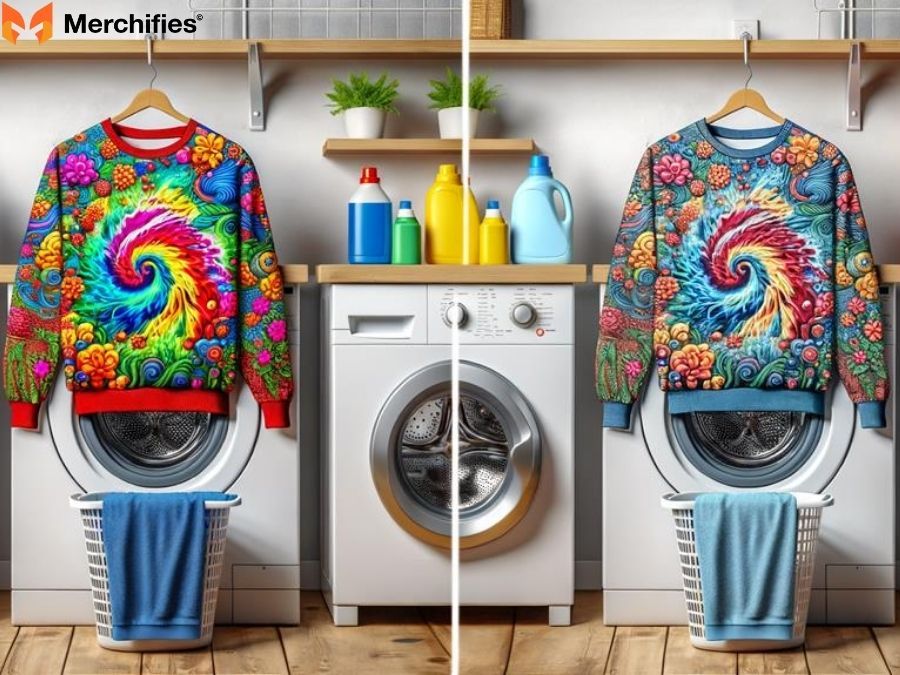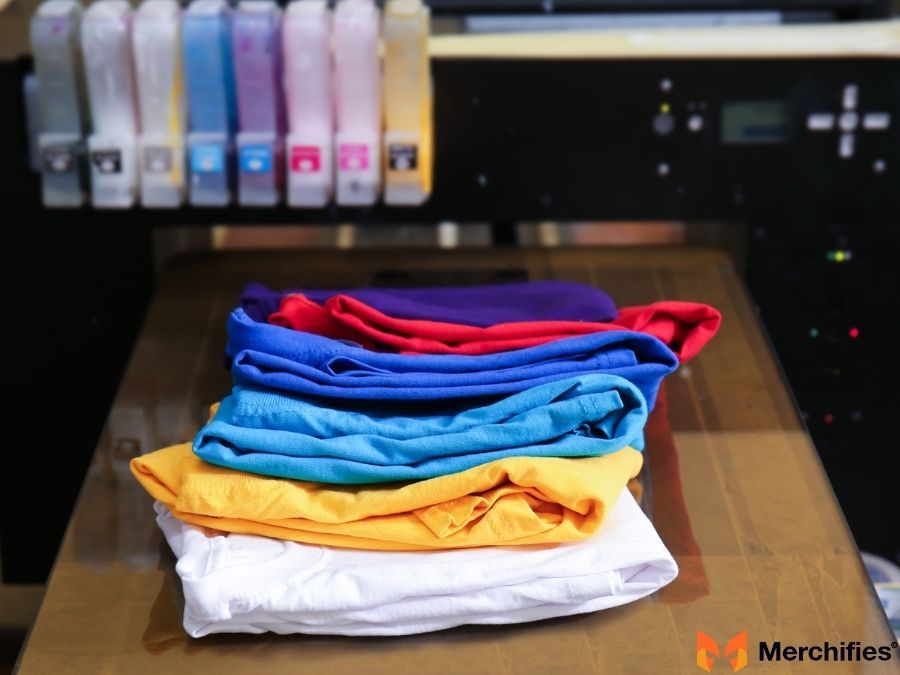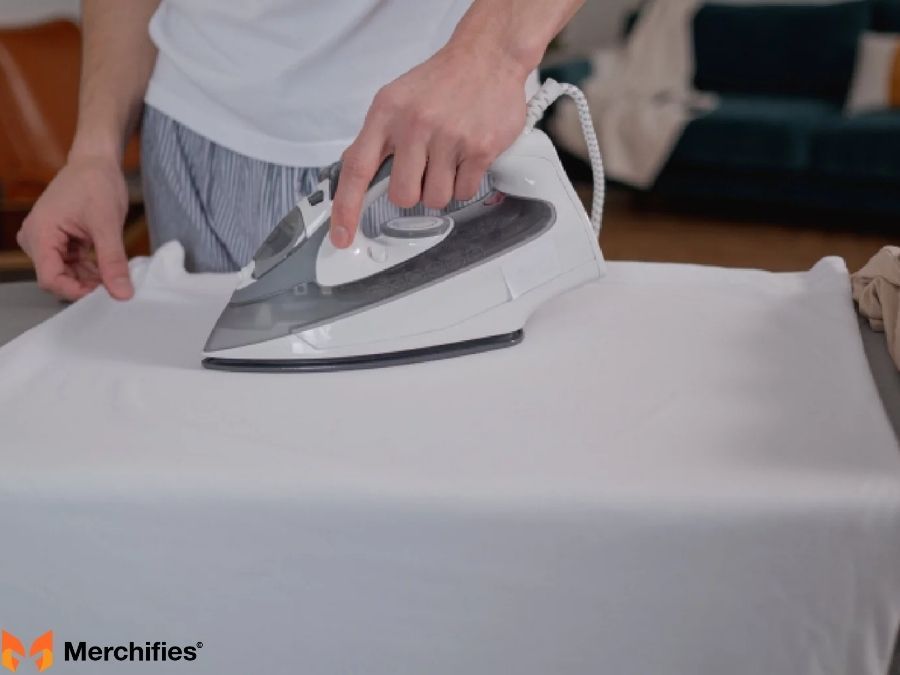How to Wash and Care for Thanksgiving Print Shirts
Keep your Thanksgiving print shirts looking fresh with these easy washing and care tips — preserve colors, fabric quality, and festive designs for years.

Blog Post Contents
Love your favorite t-shirts? Whether it’s that perfectly worn-in band tee, your go-to comfy crew neck, or your cherished festive Thanksgiving shirts, proper care is the secret to making them last longer and look great, wear after wear. Few things are more frustrating than a shrunken, faded, or damaged t-shirt after just a few washes.
This guide is essential because it bridges the gap between simply "doing laundry" and mastering the art of apparel maintenance. From your everyday comfort tees to those cherished holiday garments (like your festive Thanksgiving shirts!), understanding how to properly wash t-shirts and maintain them saves you money and preserves their quality. As Autumn Wilder, a recognized expert in textile care and an experienced professional in wardrobe longevity, often emphasizes, "A little knowledge in your laundry routine can drastically extend the life of your favorite clothes." This comprehensive t-shirt care guide will cover everything from pre-wash preparation and washing techniques to drying, stain removal, and storage for maximum longevity.
Before You Wash: Essential T-Shirt Prep for Success
Before any item hits the washing machine, a few crucial steps can prevent common laundry mishaps and set your t-shirts up for success. This foundational preparation is key to protecting fabric integrity and preserving graphic designs.
Decipher the Label: Your T-Shirt's Instruction Manual
Every t-shirt comes with a small label, often hidden along a seam, that acts as its personal instruction manual. These garment tags feature universal symbols that indicate wash temperature, bleaching options, drying methods, and ironing recommendations. Ignoring these symbols is a common mistake that can lead to irreparable damage. Always make it your first and most important resource for understanding your t-shirt's specific needs.
Sort Like a Pro: Colors, Fabrics, and Delicates
Effective sorting is your first line of defense against dye transfer and fabric damage. Separate your laundry into distinct piles: lights, darks, and vibrant colors. This is especially important for multi-colored Thanksgiving shirts that might feature a mix of bright and dark hues, where dye bleeding could be a real concern. Additionally, separate delicate items or specific fabric types, such as performance blends, wool, or silk, from sturdy cotton tees to ensure each receives the appropriate treatment.
Turn Inside Out: Protect Prints, Graphics, and Embellishments
This is a crucial tip for all graphic tees, screen prints, iron-ons, and embroidered designs. By turning your t-shirt inside out before washing, you minimize direct friction on the decorative elements during the wash cycle. This simple action significantly reduces the risk of prints cracking, peeling, fading, or rubbing off, and also helps prevent pilling on the outer surface of the fabric. This method is directly applicable to how you wash Thanksgiving shirts, as they often feature prominent designs.
Pre-Treat Stains: Act Fast, Act Smart
Accidents happen, and t-shirts are often the first to bear the brunt of common stains like food spills, grease marks, dirt, or deodorant streaks. Address stains as soon as possible for the best chance of removal. Apply a gentle pre-treatment product—a specialized stain remover, a dab of mild liquid laundry detergent, or even a baking soda paste for tougher spots—directly to the affected area. Always avoid harsh rubbing, which can damage fabric fibers or spread the stain further. Let the pre-treatment sit for a few minutes before washing.
Zip It Up & Button Down: Prevent Snags
Before loading the machine, take a moment to secure any zippers, buttons, or hooks on other garments in the same wash load. Open zippers can snag and tear delicate t-shirt fabrics, while unbuttoned items can tangle and stretch materials. This small preventative step protects not only your t-shirts but all your clothing from potential damage.

The Washing Process: How to Wash T-Shirts Correctly
Once your t-shirts are prepped, it's time to dive into the washing machine settings. The goal here is gentle yet effective cleaning that preserves the garment's original look and feel.
Choose the Right Water Temperature: Cold is Your Best Friend
For the vast majority of t-shirts, cold water is your best friend. Washing in cold water offers multiple benefits: it significantly helps prevent shrinking, minimizes color fading (keeping those festive Thanksgiving shirts vibrant), and saves energy, making it an eco-friendly choice. Warmer water might occasionally be considered for heavily soiled items, but it's rarely necessary or recommended for everyday cotton tees and can often do more harm than good by setting stains or causing shrinkage.
Select Your Detergent: Less is Often More
Using the appropriate amount of mild detergent is vital for your load size and water hardness. Overdosing on detergent can lead to excessive suds, leaving residue on your clothes and potentially irritating skin. Conversely, too little may not clean effectively. Always follow the product's instructions. Avoid harsh chemicals and opt for color-safe detergents, especially for brightly colored or patterned t-shirts, to maintain their vibrancy. Eco-friendly detergents are also a great choice for both your clothes and the environment.
Machine Settings: Go Gentle, Always
When it comes to machine settings, think "gentle." The "delicate" or "permanent press" cycle is typically ideal for prolonging t-shirt life. These settings use slower agitation and spin speeds, reducing wear and tear on the fabric fibers and minimizing stretching. Understanding spin speed is also important; a high spin speed can be rough on garments, contributing to fabric stress and wrinkling. A moderate or low spin is usually sufficient for most t-shirts.
Hand Washing: For Ultimate Delicates or High-Value Items
For items that require extra special care, such as vintage tees, heavily embellished garments, or very delicate fabrics, hand washing is the ultimate method. Fill a clean basin with cool or lukewarm water and a small amount of mild detergent. Submerge the t-shirt, gently agitating it for a few minutes. Avoid twisting or scrubbing harshly. Rinse thoroughly under cool, running water until all soap is gone, then gently squeeze out excess water without wringing.

Drying Your T-Shirts: Preserve Shape, Size, and Prints
The drying process is just as critical as washing in maintaining the quality and appearance of your t-shirts. This is where most shrinkage occurs and where prints are most vulnerable to damage.
Air Drying: The Gold Standard for Longevity
When Autumn Wilder discusses the best practices for apparel care, air drying consistently tops her list for extending garment longevity. It’s undeniably superior for preventing shrinking, minimizing fading, and preserving fabric life, all while being an incredibly eco-friendly choice. You have a couple of excellent methods: Laying flat on a clean, dry surface helps maintain the t-shirt's original shape, especially for heavier knits that might stretch when hung. Alternatively, hanging on a padded hanger is suitable for lighter tees, but always avoid clipping or hanging from the shoulders or neckline to prevent stretching marks. This method is especially vital for protecting intricate prints and designs on your Thanksgiving shirts.
Tumble Drying: Low Heat or No Heat is Key
If using a tumble dryer is a necessity, always opt for the lowest heat setting available, or ideally, the "air fluff" or "no heat" cycle. High heat is the primary culprit behind t-shirt shrinkage and can prematurely degrade fabric fibers and graphic designs. Adding dryer balls can help by reducing drying time and adding a natural softness without harsh chemicals. Remove t-shirts promptly from the dryer as soon as they are dry to prevent wrinkles from setting in and to avoid over-drying, which can lead to fabric stiffening and damage. This directly addresses preventing shrinkage, a primary concern for anyone seeking a comprehensive t-shirt care guide.
Special Care for Unique T-Shirts & Common Challenges
Different t-shirts and common laundry problems require specific strategies to keep them looking their best.
Protecting Graphic & Printed T-Shirts (Especially Your Festive Thanksgiving Shirt!)
Graphic tees, particularly those with intricate designs like your festive Thanksgiving shirts, demand extra vigilance. Reiterating the importance, always turn them inside out before both washing and drying. Air drying is paramount for maintaining print integrity; direct heat from a dryer can cause graphics to crack, peel, or melt. If ironing is absolutely necessary for wrinkles, iron the t-shirt inside out on a low heat setting, and never apply the iron directly to the print. A pressing cloth can offer an extra layer of protection if you must iron the outside near the design.
Keeping Dark Colors Vibrant, Not Faded
Dark-colored t-shirts are prone to fading over time. To combat this, always wash them with like colors and exclusively use cold water. Consider using detergents specifically formulated for dark garments, which often contain agents designed to lock in color. Turning dark tees inside out also helps protect the outer surface from friction that contributes to fading.
Brightening White T-Shirts Without Damage
To keep white t-shirts bright without resorting to harsh chemicals, always wash them separately from colors. For an extra boost, use non-chlorine bleach alternatives like oxygen bleach, or natural brighteners such as baking soda or distilled white vinegar added to the wash cycle. Avoid traditional chlorine bleach, which can yellow white fabrics over time and weaken fibers.
Preventing and Minimizing Shrinkage
Prevention is key: always wash in cold water and opt for air drying or the lowest heat setting in a tumble dryer. Cotton is particularly susceptible to shrinking when exposed to high heat. If a t-shirt has slightly shrunk, you can sometimes gently stretch it back into shape while it's damp, but this works best for minor shrinkage. For heavily shrunken items, results may vary.
Dealing with Pilling and Fuzz Balls
Pilling—those tiny balls of fiber that accumulate on the surface of fabric—is caused by friction during wear and washing. To deal with existing pills, a fabric shaver or a lint roller can effectively restore smoothness. To prevent pilling, continue washing t-shirts inside out and using gentle wash cycles to minimize friction between garments.

Beyond the Wash: Ironing and Storage for Perfect Tees
The journey of t-shirt care doesn't end when the laundry is done. Proper ironing and storage are the final steps to ensure your tees look perfect every time you reach for them.
Ironing T-Shirts: When and How to Get It Right
Not all t-shirts need ironing, but for those that do, proceed with caution. Always iron t-shirts inside out and on a low heat setting to protect both the fabric and any prints or embellishments. For delicate fabrics or if you're concerned about direct heat, use a pressing cloth between the iron and the garment. Many wrinkles can be avoided with proper drying and storage, minimizing the need for ironing altogether.
Proper Storage: Keep Them Fresh and Wrinkle-Free
The way you store your t-shirts significantly impacts their longevity and appearance. For most cotton tees, folding them neatly and stacking them in drawers is ideal. For items prone to stretching, or those made from delicate materials, consider laying them flat or using padded hangers to avoid shoulder bumps. Always store t-shirts in a clean, dry, and cool environment, away from direct sunlight, which can cause fading. Avoid overcrowding drawers or closets, as this can lead to wrinkles and creasing.

T-Shirt Care FAQs: Your Top Questions Answered
Can I wash all my Thanksgiving shirts together, even if they're different colors?
It's best to sort your Thanksgiving shirts by color (lights, darks, brights) to prevent dye transfer, especially if they are new or vibrant. If you must wash them together, use cold water and a color-safe detergent, but separating is always the safest bet.
How often should I wash my t-shirts?
Typically, t-shirts should be washed after every wear. For undershirts or very lightly worn outerwear that isn't sweaty or stained, you might get an extra wear, but generally, one wear equals one wash for hygiene and to maintain freshness.
What's the best way to remove armpit stains and odors from t-shirts?
For armpit stains, a paste made of baking soda and water applied directly to the stain for 30 minutes before washing can be effective. For odors, a pre-soak in white vinegar (diluted 1:4 with water) for 30 minutes before washing, or adding half a cup of vinegar to the rinse cycle, works wonders.
My t-shirt shrunk in the wash – can I really fix it?
For slightly shrunken cotton t-shirts, you might be able to gently stretch them back. Soak the shirt in lukewarm water with a small amount of hair conditioner for about 30 minutes. Gently wring out the water, lay it flat on a towel, and carefully stretch it back to its original shape while it's still damp. Let it air dry completely.
Is it okay to use fabric softener on t-shirts, especially graphic ones?
It's generally recommended to avoid fabric softener on graphic t-shirts as it can break down the integrity of the print over time. For regular t-shirts, if you use it, do so sparingly, as it can also reduce the absorbency of the fabric and potentially leave residue.
How do I prevent my t-shirts from stretching out?
Prevent stretching by washing in cold water on a gentle cycle, avoiding harsh agitation, and air drying flat or on padded hangers. Never hang heavy, wet t-shirts, especially from the shoulders, as the weight of the water can cause permanent stretching.
Conclusion
A little mindful effort in your t-shirt care routine goes a long way in preserving your favorite garments. It's not just about cleaning; it's about safeguarding your style and comfort. By consistently following this comprehensive t-shirt care guide, you can significantly extend the life and vibrant appearance of all your tees, from that cherished Thanksgiving shirt to your most comfortable everyday wear. As Autumn Wilder concludes, "Caring for your clothes isn't a chore; it's an investment in your wardrobe and a simple habit that yields lasting rewards."
What are your best t-shirt care secrets? Share them in the comments below!